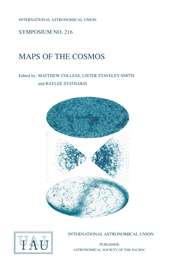No CrossRef data available.
Article contents
Molecular Gas in High Luminosity Galactic Nuclei
Published online by Cambridge University Press: 03 August 2017
Abstract
Optical and near infrared imaging of the luminous infrared galaxies show significant asymmetries, distortions, double nuclei, bars, and tidal tails indicating that the galaxies have undergone significant dynamical perturbations. Single dish CO data indicate extremely high molecular gas contents (1-20 times that of the Milky Way) in these galaxies. Approximately 25 of them have been mapped at high resolution using the millimeter interferometers and in virtually all cases, extremely high gas concentrations are found in their nuclei. In most instances, a substantial fraction of the total molecular gas content is seen within radii ≲ 1 kpc; in a few cases, the gas is concentrated in a central bar or massive spiral arms (eg. NGC 1068). The dense molecular gas probably plays a pivotal role in the evolution of such dynamically disturbed systems: being dissipative, the gas can readily sink to the center of the system where it may fuel a nuclear starburst and/or build up and fuel a central active nucleus.
- Type
- IX- Galaxy Nuclei
- Information
- Copyright
- Copyright © Kluwer 1991


